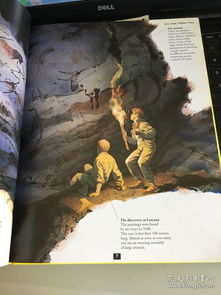Content:
Fishing, an ancient pastime that has been cherished by many for generations, is often associated with the image of a person calmly sitting by a tranquil water body, rod in hand, waiting for a fish to bite. However, what happens when the fish are not in the water? This question might seem peculiar, but it's not as far-fetched as it sounds. In certain situations, fish may not be swimming in the water, and this calls for unconventional fishing techniques. In this article, we will explore some of these techniques to help you catch fish when they're not in the water.
Ice Fishing
One of the most common scenarios where fish are not in the water is during winter, when lakes and rivers are frozen over. Ice fishing is a popular pastime in many cold-weather regions. To catch fish while ice fishing, you need to follow these steps:
a. Find a hole in the ice: Look for a safe spot to drill a hole in the ice, ensuring it's thick enough to support your weight.
b. Prepare your gear: Set up your fishing rod with appropriate tackle and bait, such as minnows, jigs, or artificial lures.
c. Fish through the hole: Drop your line through the hole and wait for a bite. When you feel a fish on the line, gently reel it in.
Fly Fishing in Dry Flies
Another situation where fish might not be in the water is during a dry fly fishing technique. In this method, the fly is placed on the surface of the water, and the fish are above it. Here's how to do it:
a. Choose the right fly: Select a dry fly that mimics the insects or food source available in the area.
b. Cast your line: Make a gentle cast with your fly rod, allowing the fly to land softly on the water.
c. Present your fly: Gently manipulate your rod to create lifelike movements, enticing fish to strike.
Shore Fishing
When a river or lake is too polluted, or when the fish are too deep to reach with a conventional rod, shore fishing can be an effective alternative. Here's how to go about it:
a. Choose the right spot: Find a suitable location with a clear view of the water and fish.

b. Use a long rod: A longer rod can help you cast further and reach deeper water.
c. Bait your hook: Attach appropriate bait, such as worms, minnows, or corn, to your hook.
d. Cast and wait: Cast your line, let it sink, and wait for a bite.
Bank Fishing
Bank fishing is a great option when the fish are not in the water, such as during low tide or when the water is too shallow for them to swim. Here's how to bank fish:
a. Choose the right spot: Find a suitable bank with a clear view of the water and fish.
b. Use appropriate tackle: Choose a light rod and line to avoid spooking the fish.
c. Bait your hook: Attach the appropriate bait, such as worms, minnows, or bread.
d. Cast and wait: Cast your line, let it sink, and wait for a bite.
Night Fishing
Night fishing is another unconventional technique that can be effective when the fish are not in the water. Fish are often more active at night, and using night fishing techniques can yield great results. Here's how to get started:
a. Choose the right location: Find a place where fish are known to congregate at night.
b. Use artificial lures: Lures with a good glow or flash can attract fish in the dark.
c. Fish during twilight: Fish during the twilight hours when the fish are most active.
d. Be patient: Night fishing can be challenging, so be prepared to wait for a bite.
In conclusion, while conventional fishing techniques often involve waiting for fish to swim to the hook, there are several unconventional methods to catch fish when they're not in the water. By exploring these techniques, you can expand your fishing repertoire and increase your chances of landing a fish, regardless of the situation. So, the next time you find yourself asking, "How do I fish when the fish are not in the water?" remember these unconventional techniques and give them a try. Happy fishing!












